Kongsberg Defence & Aerospace AS has entered into a follow-on contract with Japan to supply the JSM (Joint Strike Missile) for their fleet of F-35 fighter aircraft.
The contract is valued £38 million.
Kingsberg say that the JSM is a 5th generation stealth air-to surface missile that can be carried internally in the F-35 thus ensuring the aircraft’s low-signature capabilities.
“The JSM has superior performance against well-defended sea- and land targets across long distances.”
Improved features for the Joint Strike Missile over the Naval Strike Missile onw hich it is based include:
- Shape changed to fit in F-35 internal bay
- Ability to attack sea and land based targets
- Improved range over NSM, estimates include 150 nmi (170 mi; 280 km) to >100 nmi low-low-low or > 300 nmi (350 mi; 560 km) hi-hi-low flight profiles
“The international F-35 user community is showing great interest in the JSM. KONGSBERG is very proud to have been selected by Japan to provide the JSM for their F-35 fleet. Our relationship is growing even stronger with this follow-on contract”, says Eirik Lie, President, Kongsberg Defence & Aerospace AS.


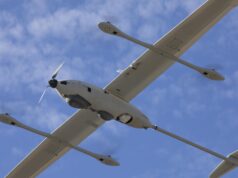

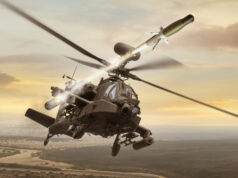
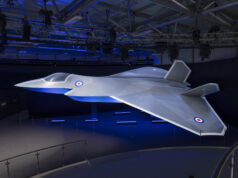

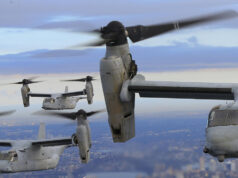


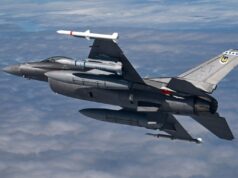


I assume it doesn’t fit into the internal bay of the B variant as seems the case with pretty much everything else?
Yes, that is my understanding – it was intended to be internally stored in the Alphas and Charlies, however for all F-35 variants, it can be externally wing mounted. The JSM can also be added externally to the F/A-18E/F, F-16V, P-8A Poseidon and (possibly) the Typhoon.
Aside from Japan and Norway, both South Korea and Australia will likely place orders for the JSM to support their F-35 fleet. Australia also financed some of the JSM radar development with Kongsberg.
Using externally would compromise the stealth of the plane and when your attacking a war ship you need every bit of stealth you can get to ensure you have any change of making it into range to fire and getting away again, especially if there are opposition jets also in the area. Saying that it’s a capability the royal navy is completely lacking right now and so would be a good potential purchase.
For that and other reasons, the RAF are looking to the MBDA SPEAR III Standoff Missile family. The F-35B should be capable of internally carrying 4 SPEAR IIIs and a Meteor in each of its 2 bays:
https://www.thedrive.com/the-war-zone/29789/spear-mini-cruise-missile-getting-an-electronic-warfare-variant-to-swarm-with-is-a-huge-deal
Spear 3 is a 100kg class missile. JSM is a 400kg missile , the warhead alone is about 125kg so the precision strike approach of Spear 3 will have to be effective to disable a frigate.
I know this is a bit of a tangent but surely even something relatively small like a hellfire from an Apache hitting a ship is going to mess up the crew.
The blast wave and noise will shake people up pretty good even if it’s only minor structural damage.
I went to the Farnborough air show and they had a simulated Apache attack with what I assume is much less noisy pyrotechnics and even those were loud enough to be unsettling.
I can’t imagine the impact of even 25kg of high explosives going off on the ship I’m on.
maybe but can fire off 8 of them instead of 2 – might have a better chance of getting through and doing some damage
This isn’t necessarily the case, I was concerned by this too, but someone wiser than me pointed out a couple of things; 300 nautical mile range when launched from a high flying aircraft (which you’d expect from a stealth fighter) is well outside the engagement distance of most shipboard air defence systems. In addition, the missile itself is L/O, and for obvious reasons it’s not entirely clear how much the F-35’s L/O rating would diminish with one or two JSM on external hardpoints. At 300 nm, it likely won’t be enough to be seen, let alone achieve a target lock, even if the air defence missiles carried by the vessel have the range to reach out to touch them before the F-35 launches and turns 180 degrees.
I’d say they’re a great buy, particularly as they could be carried by Typhoon, fitted to our RN ships (I believe they have a cannister launched version), and potentially even fitted to Merlin if the RN really wanted to go crazy!
Being able to track/engage isn’t necessarily the only part. A big part is knowing the jet is incoming so all defensive systems / operators can be ready and not have a Falklands issue of no one being on station at the essential moment.
Very true, and out in the ocean, any enemy we attack not be always at battle stations.
I did a quick check, and an aircraft launching a missile from 10,000 m / 33,000 ft (I’m assuming this is what a missile manufacturer would describe as high) would be considered over the horizon (i.e invisible to radar) at 270 miles. So the JSM has a greater range than the radar horizon of the ship it’s launching at. This would obviously assume that the targeting information would be coming from another source than the launching aircraft, but that’s entirely reasonable when talking about the F-35.
Here’s the link for the maths if you want to try; I won’t pretend I did it all in my head…!
http://members.home.nl/7seas/radcalc.htm
The spotter approach where one plane is the bomb truck and the other is the targeting system is in theory a great way to approach missile defences. The question is whether the targetter can guide a missile in without using an active radar and getting tracked themselves and whether the signal between them can be itself tracked
Absolutely, and I guess that comes down to a few things. Obviously a “clean” F-35 using its MADL link is the assumed choice. My understanding is that missiles like JSM can guide themselves into a target area passively by pre-loaded informaiton and then upates, and then target using infra-red passively inthe terminal phase too. Because the JSM is also L/O, then the probability of it being spotted and countermeasures beign deployed is thus low. The weak link in the chain, as you say, is the data link being intercepted. Hoenstly, I really don’t know how likely that would be.
Long term, I guess there may also be other platforms that could provide targetting data, such as unmanned aircraft and maybe even stallites?!
You might be interested in this report.
https://www.reuters.com/article/us-spacex-starlink-airforce-idUSKBN1X12KM
Interesting! Thanks for that, I wonder if the UK’s latest SKYNET network is moving towards that capability…
Yes and no. It all depends on the radar’s frequency. For S, C, X band and higher frequencies that is certainly true. This is because the frequencies are what you would call line of sight. The lower frequency bands have what is called over the horizon capabilities and for a change wiki is actually accurate. There are two options here, one is to bounce the transmission off the ionosphere, the other using slightly higher frequencies is the ground wave principle. Both of these methods have been used to detect stealthy aircraft, however, they will only let you know there’s something out there, giving you a rough range and direction.
The problem for ships is that due to the low frequencies MHz range, the wavelength is very long. Therefore the required antenna size is huge e.g. can be up to a kilometre long depending on frequency. Therefore the over the horizon radars are not really practical for ships. Which limits the ship’s radar to one that is only line of sight.
For a single ship operating on its own this is a major problem. Depending on the height of the antenna this could give a radar horizon out to 30Km. Which means there’s a massive blind-spot behind the horizon caused by the curvature of the earth. Due to radar principles, you will always detect a transmitting radar before it can detect you. Therefore an aircraft such as the F35B even with underwing hardpoints, whilst operating at altitude should detect the ship long before being detected. With the ship pinpointed, it can now approach the ship at lower level and release its weapons as close a safely practicable, which will give the ship less time to react.
The problem comes when you are trying to attack a ship that is supported by an AEW type aircraft. Even Merlin with its Crowsnest radar will push the horizon out to 250Km when operating above 3000m. For something like an E2D Hawkeye, the range is substantial greater and its radar is significantly better. Therefore, a F35 using harpoints will need to make sure it flies towards the E2D, thus minimising the side reflections from the pylons. The beauty of the E2D and to some extents a Croswnest Merlin is that not only tracking and targeting information can be sent to the ship, but the aircraft can also control the weapons after launch.
Good points, well made. I was assuming ship board air defence radars, but those over the horizon ones you mention are truly impressively big!
AEW aircraft are, of course a big bonus in this area, although that would require a vessel capable of deploying them (assuming a blue water fight here, for the time being). As far as I’m aware, that’s only the US and France at the moment, although I can’t say I’m up to date on China’s full capabilities. I think they all operate fixed wing systems, unlike Crowsnest/Merlin, so we’re talking about attacking a carrier group at this point, or vessels close to one.
What you say about heading towards the AEW aircraft is true, although the nice thing is that our RN/RAF/FAA (what are they, if they’re flying off the HMSQE?!) F-35 isn’t going to be flying alone. The AEW aircraft, suffers from being vulnerable to a 2nd (clean) stealthy aircraft with A2A missiles like Meteor. The AEW radar puts out huge amounts of energy, which aircraft like the F-35 can track and prosecute very easily. If you have a radiation seeker on the warhead too (I believe there was talk of fitting Meteor with one at one point), then it can home passively all the way into the aircraft. Unless you have a particularly good countermeasures package, and potentially have a very capable fighter screen for your AEW aircraft, then you might find yourself blind and then under ASM attack in the space of 5-10 minutes or so, which isn’t really all that long.
Very little known fact about semi-active/active air to air missiles. They have a secondary passive mode, which can home on to a transmitter. The transmitter must be with the frequency range of the missile’s antenna/receiver combination, but it’s a capability none the less. The combination of F35 with internal Meteor will be a real threat to any AEW aircraft.
Russia do in fact have an AEW aircraft for their joke of a carrier, it’s also used on some of their amphibs as well. This is the Kamov KA31, like crowsnest it has a antenna that folds down under the aircraft. The E-801M OKO (“EYE”) radar, compared to the Seaspray antenna, uses a huge plannar array and when not in use folds flat under the aircraft. I am not sure of its capabilities, but there’s some info on wiki. Both China and India use this aircraft for their carrier AEW. There have been rumours of China developing a Hawkeye clone for their future CATOBAR carrier.
I certainly did not know that! Thanks. I’d imagine that an AEW radar sweep would be within the same range, no?
I’d not be at all surprised if China came out with a hawkeye clone to coincide with their first CATOBAR carrier; that’s not too far off now, I don’t think.
Pretty much all these countries are going use this missile especially if the RCAF selects the F35 for it’s next buy. Too bad the RN doesn’t have a hull here. Maybe next year.
https://www.navy.mil/management/photodb/webphoto/web_191111-N-ZZ999-0146.JPG
191111-N-ZZ999-0146 PHILIPPINE SEA (Nov. 11, 2019) Ships from the U.S. Navy, Japan Maritime Self-Defense Force, Royal Australian Navy, and Royal Canadian Navy are underway in formation during Annual Exercise (ANNUALEX) 19. ANNUALEX 19 is an annual, bilateral exercise which further develops coordination and interoperability of the premier alliance between the U.S. Navy and the Japan Maritime Self-Defense Force. (U.S. Navy photo courtesy of Japan Maritime Self-Defense Force/Released)
Please sir, can the UK have an intermediatry ASM like the NSM, rather than the obsolete Harpoon, until Perseus becomes deployable in another decade?
It’s an own-goal to leave us without one.